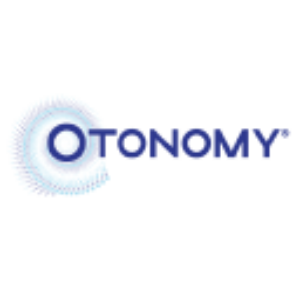Otonomy Reports Results from Clinical Evaluation of OTO-413 Higher Doses in Patients with Hearing Loss
Rhea-AI Summary
Otonomy, Inc. (Nasdaq: OTIC) announced disappointing results from higher dose cohorts of OTO-413 for hearing loss, with no significant improvement in patient outcomes compared to baseline. This contrasts with previous positive findings at a lower dose of 0.3 mg in earlier trials. The company noted that a complex dose-response relationship might be affecting results. Otonomy plans to explore strategic options to enhance its pipeline, including both OTO-413 and OTO-825, amid a challenging financing environment.
Positive
- Previous lower dose of OTO-413 (0.3 mg) showed clinically meaningful improvement.
- Otonomy is exploring strategic options to realize value from OTO-413 and OTO-825.
Negative
- Higher doses of OTO-413 (0.75 mg and 1.50 mg) showed no clinically meaningful improvement.
- Disappointment in clinical activity for OTO-413 is unexpected based on prior studies.
News Market Reaction
On the day this news was published, OTIC declined 53.46%, reflecting a significant negative market reaction.
Data tracked by StockTitan Argus on the day of publication.
- Higher dose cohorts for OTO-413 demonstrated no clinically meaningful improvement for patients from baseline
- Lack of activity compared to 0.3 mg dose evaluated in prior studies may be due to a complex dose-response relationship that has been observed with neurotrophins
- Otonomy intends to explore strategic options to advance and realize value from its pipeline including both OTO-413 and OTO-825
SAN DIEGO, Oct. 13, 2022 (GLOBE NEWSWIRE) -- Otonomy, Inc. (Nasdaq: OTIC), a biopharmaceutical company dedicated to the development of innovative therapeutics for neurotology, today announced that the clinical evaluation of higher doses for OTO-413 (0.75 mg and 1.50 mg) in patients with hearing loss demonstrated no clinically meaningful improvement for patients from baseline across multiple speech-in-noise (SIN) hearing tests. These results are in contrast to the positive clinical signal observed with 0.3 mg OTO-413 versus placebo in the previous Phase 1/2 and Phase 2a trial cohorts using the same study design and endpoints.
The randomized, double-blind, placebo-controlled higher dose cohorts enrolled patients who self-reported difficulty hearing in a noisy environment that was confirmed with a SIN hearing test. In each dose cohort, nineteen patients were randomized 2:1 to a single intratympanic injection of OTO-413 (0.75 mg or 1.50 mg) or placebo. Patients were assessed with the same SIN tests utilized in prior cohorts including the Words-in-Noise (WIN) test, with the assessment of treatment benefit based on demonstration of a clinically meaningful improvement from baseline versus placebo at both Days 57 and 85.
“The lack of clinical activity for OTO-413 in these higher dose cohorts is disappointing and unexpected based on our in vivo preclinical studies which supported a broad therapeutic dose range for OTO-413. However, our ex vivo studies as well as data in the neurotrophin literature suggest the possibility of a complex dose-response relationship for BDNF with declining activity observed at higher dose levels, which might explain these results,” said Alan C. Foster, Ph.D., chief scientific officer of Otonomy. “We have previously demonstrated in two separate study cohorts that a single, unilateral injection of 0.3 mg OTO-413 provides a clinically meaningful improvement for patients from their baseline hearing level compared to placebo.”
“We have learned a great deal about the various SIN hearing tests, patient profiles, study design considerations and dosing from the multiple clinical trial cohorts we have conducted for OTO-413 which is intended to treat the most common complaint of hearing loss patients,” said David A. Weber, Ph.D., president and CEO of Otonomy. “In light of the challenging financing environment, we intend to explore strategic options to advance and realize value from our pipeline including both OTO-413 and OTO-825, our gene therapy program for congenital hearing loss.”
About Speech-in-Noise Hearing Loss
Recent scientific advances have shown that the loss of synaptic connections between inner ear hair cells and auditory nerve fibers contributes to hearing impairment. This cochlear synaptopathy is proposed as an underlying pathology in age-related and noise-induced hearing loss and is believed to contribute to the common difficulty of hearing speech in the presence of background noise. Overall, there are more than 50 million people in the U.S. who self-report having a problem hearing in background noise. The disease burden associated with hearing loss is significant as it has been shown to lead to social isolation, depression and early cognitive decline. Hearing aids typically provide limited benefit addressing patients’ speech-in-noise hearing, and there are no FDA-approved drug treatments for this condition.
About OTO-413
OTO-413 is a proprietary, sustained-exposure formulation of brain-derived neurotrophic factor (BDNF), which is a naturally occurring protein involved in neuron growth and repair. Nonclinical studies have demonstrated that local administration of BDNF repairs the connections between inner hair cells and auditory nerve fibers in the cochlea that are damaged due to noise trauma or exposure to ototoxic chemicals. Furthermore, Otonomy has demonstrated in preclinical studies that repair of synaptic connections is associated with a restoration of hearing function. Initial clinical studies have demonstrated that a single intratympanic injection of OTO-413 is well-tolerated and improves hearing function across multiple clinically validated speech-in-noise hearing tests.
About Otonomy
Otonomy is a biopharmaceutical company dedicated to the development of innovative therapeutics for neurotology. The company pioneered the application of drug delivery technology to the ear in order to develop products that achieve sustained drug exposure from a single local administration. This approach is covered by a broad patent estate and is being utilized to develop a pipeline of products addressing important unmet medical needs with a focus on hearing loss. For additional information please visit www.otonomy.com.
Cautionary Note Regarding Forward Looking Statements
This press release contains forward-looking statements within the meaning of the Private Securities Litigation Reform Act of 1995. Forward-looking statements generally relate to future events or the future financial or operating performance of Otonomy. Forward-looking statements in this press release include, but are not limited to, statements regarding Otonomy’s intention to explore strategic options to advance and realize value from its pipeline including both OTO-413 and OTO-825. Otonomy’s expectations regarding these matters may not materialize, and actual results in future periods are subject to risks and uncertainties. Actual results may differ materially from those indicated by these forward-looking statements as a result of these risks and uncertainties, including but not limited to: Otonomy’s ability to accurately forecast financial results; Otonomy’s expectation that it will incur significant losses for the foreseeable future; Otonomy’s ability to implement measures to extend its cash runway and manage operating expenses; Otonomy’s ability to obtain additional financing; Otonomy’s ability to successfully identify strategic options to advance and realize value from its pipeline; Otonomy’s ability to develop product candidates that have viable commercial prospects; delays and disruption resulting from the COVID-19 pandemic and governmental responses to the pandemic, including current and future impacts to Otonomy’s operations, the initiation and progression of, and enrollment in, its clinical trials, and patient conduct and compliance; the uncertainties inherent in the clinical drug development process, including, without limitation, Otonomy’s ability to adequately demonstrate the safety and efficacy of its product candidates, the nonclinical and clinical results for its product candidates and the potential for clinical trials to differ from preclinical, early clinical, preliminary, top-line or expected results, which may not support further development, and challenges related to patient enrollment, conduct and compliance in clinical trials; the integrity of patient-reported outcomes in its clinical trials; Otonomy’s ability to repay or comply with the terms of the loan provided by Oxford Finance LLC; the risks of the occurrence of any event, change or other circumstance that could impact the performance under or give rise to the termination of any collaboration or license agreements; side effects or adverse events associated with Otonomy’s product candidates; Otonomy’s ability to obtain regulatory approval and successfully commercialize its product candidates, if approved; competition in the biopharmaceutical industry; Otonomy’s dependence on third parties to conduct nonclinical studies and clinical trials, and for the manufacture of its product candidates; Otonomy’s ability to protect its intellectual property in the United States and throughout the world and to ensure compliance with various laws and regulations in countries in which it conducts clinical trials; expectations regarding potential therapy benefits, market size, opportunity and growth; implementation of Otonomy’s business model and strategic plans for its business, products and technology; general economic and market conditions; and other risks. Information regarding the foregoing and additional risks may be found in the section entitled “Risk Factors” in Otonomy’s Quarterly Report on Form 10-Q filed with the Securities and Exchange Commission (SEC) on July 25, 2022, and Otonomy’s future reports to be filed with the SEC. The forward-looking statements in this press release are based on information available to Otonomy as of the date hereof. Otonomy disclaims any obligation to update any forward-looking statements, except as required by law.
Contacts:
Investor Inquiries
Westwicke ICR
Robert H. Uhl
Managing Director
858.356.5932
robert.uhl@westwicke.com










